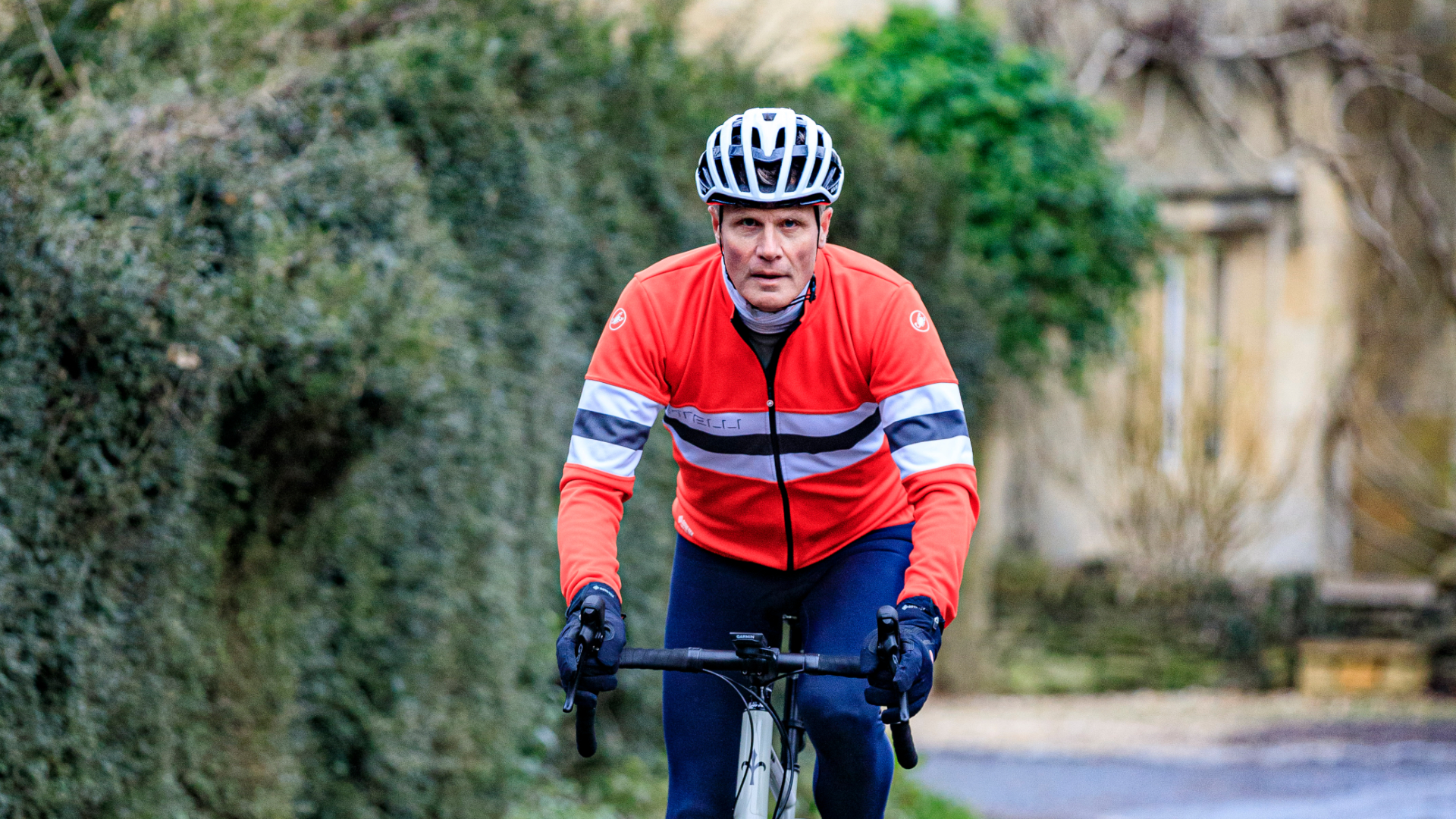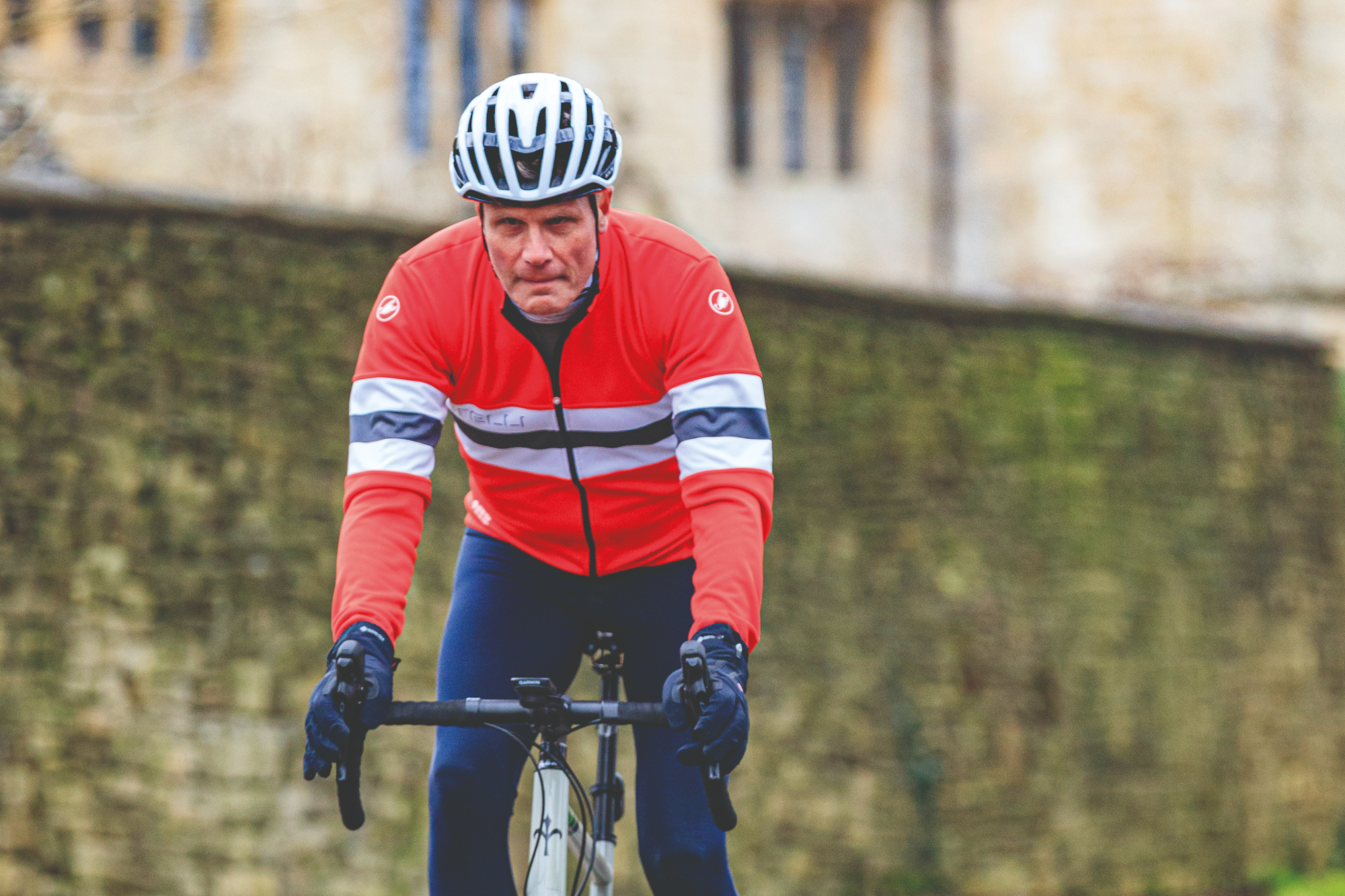
It was the summer of 2011 and life was good. In anticipation of a late-season cycling trip to the Dolomites, I’d been steadily building fitness since January. One Saturday, bored of my local Cotswold rides, I drove down through Devon to run the spectacularly pretty but brutally hilly 24km Sidmouth to Beer coastal path. Despite the 2,000m of ascent, I remember gliding effortlessly along the cliff-tops that day with just the gulls for company, wheeling above me in a brilliant blue sky. Back in Sidmouth, lounging in a cafe, I became aware of a strange sensation in my chest. It was as if an agitated finch was trapped in my upper ribcage. Still wearing my heart rate monitor, I watched my heart rate yo-yo between 70bpm and 280bpm.
I ran 50m up the beach hoping it would reset. It didn’t. In fact, I was now feeling positively unusual. Fearing the worst, I walked back to the café and asked the waiter to call an ambulance. Two hours later I was lying in a hospital bed in Exeter, encircled by junior doctors taking turns to peer at me, then at the folds of thermal paper spewing from a nearby ECG machine. “The trace, it’s all over the place,” blurted one doctor with enthusiastic incredulity. “Can I go home?” I asked meekly. “You’re kidding, right?” he replied. “It’s your heart.” I was in my mid-40s, fit and healthy, but I was about to be diagnosed with a heart condition, something I considered unthinkable at the time. It was an arrhythmia called atrial fibrillation, which according to NHS estimates afflicts around 1.4 million people in the UK, about 2.5% of the population.
How common is arrhythmia for cyclists?

Sonny Colbrelli, Chloé Dygert and Zdeněk Štybar are just a few of the pro cyclists who have suffered arrhythmias in recent years. The term arrhythmia means an abnormal heart rhythm, and there are many kinds. Symptoms vary from unusually slow to exceptionally fast beats, which may be regular or wildly irregular. Some arrhythmias are almost entirely benign, others carry mild to moderate risks, and a few can result in sudden death.
Multiple studies have shown that a sedentary lifestyle heightens your risk of developing an arrhythmia, but atrial fibrillation (AF or Afib) has been linked to exercise. One study found that those who do endurance exercise increase their odds of developing Afib by 16% on average, and concluded that “cumulative years of regular endurance exercise were associated with a gradually increased risk for Afib”. This is a concern for cyclists because, left untreated, Afib increases your risk of stroke fivefold according to the Stroke Association.
In a healthy heart, the muscular walls contract regularly to pump blood around the body. Then they relax, so the heart can refill with blood, and the cycle continues. The heart’s upper chambers, the atria, receive and regulate blood to the larger and more powerful lower chambers, the ventricles, which are responsible for the main pumping action. With Afib, the atria contract in an erratic fashion, reducing efficiency and performance. Worse still, this may cause blood to pool and clot in the atria, hence the stroke risk.
Are cyclists at greater risk of atrial fibrillation?

I had gone to Devon for a jog and a cream tea but returned home with Afib. Why me? Consultant cardiologist and electrophysiologist professor Graham Stuart (sportscardiology.co.uk) is uniquely qualified to guide endurance athletes on the risks of developing Afib. He has advised pro rugby and football teams, and is a keen endurance athlete himself. By uncanny coincidence, when I speak to Stuart, he is recovering from surgery to treat his recently diagnosed Afib.
“It’s absolutely clear that in men, endurance exercise increases the risk of Afib,” says Stuart. “It’s four or five times higher than in the sedentary population.” Why the increased risk? “The answer is multifactorial,” says Stuart. “Exercise builds strong hearts that beat less frequently, a consequence of downregulated IKF channels, which is the mechanism that allows salts in and out of the heart muscle. When athletes experience a slow heart rate, sometimes an abnormal escape rhythm is triggered, commonly Afib.” There may be underlying reasons too. “Another factor is genetics,” Stuart continues. “In my case, I do a lot of exercise, but I also have parents with Afib.”
Physically larger athletes are especially prone to Afib. “As a 6ft 2in athlete with a resting heart rate in the 30s and parents with Afib, I was destined to suffer it,” Stuart adds. As a 6ft 4in cyclist with a resting heart rate in the high-40s perhaps I was similarly destined.
Should you stop cycling if you develop Afib?
By this point I’m left pondering whether life curled up on the sofa watching Corrie reruns is a safer bet than cycling? Absolutely not. Countless studies have demonstrated that exercise lessens the risk of developing a whole host of nasties including diabetes, many cancers and coronary artery disease. Cycling is also a social sport that brings huge benefits for mental health. Somewhat confusingly, some studies have shown that exercise is excellent for preventing and managing Afib too. It appears to be a matter of degree.
“There’s a U-shaped curve of risk corresponding to exercise volume,” explains Stuart. “If you’re a sedentary, overweight guy who smokes, then you have a relatively high risk of developing Afib. That risk declines as you become more active and make better lifestyle choices but increases again once you start doing a lot of exercise.”
So how much is too much? “Exactly where that point is, is difficult to say, but once you do more than 10 hours a week, you’re on the upward curve. That’s not to say that 11 hours will be dangerous for you, but once you’re up at 20 to 30 hours, then your risk is much higher. A weekend warrior doing five to seven hours a week should be at low risk.” More research is required before scientists will be able to estimate risk on an individual level.
Dr Marius Myrstad is leader of the Norwegian Exercise and Atrial Fibrillation Initiative (NEXAF), a research consortium that aims to inform the development of specific exercise recommendations for Afib patients, including athletes. “There is a complex dose-response relationship between physical activity and Afib risk,” says Myrstad. “In most of the population, physical activity prevents Afib by guarding against cardiovascular conditions such as hypertension [high blood pressure], diabetes and obesity. On the other hand, in the most active part of the population, repeated exposure to high-intensity exercise over many years seems to cause Afib in some people who are otherwise healthy.” In these cases, it is thought that exercise-induced changes in the heart raise the risk of Afib. These maladaptations may include dilation of the atria, inflammation and fibrosis.
“Yes, Afib can be caused by exercise,” continues Myrstad, “but we don’t know why some people who exercise a lot get Afib while others do not. There is no cut-off above which we can say exercise will cause Afib, on an individual level.” In the NEXAF Detraining Trial, Myrstad is studying up to 120 athletes – including cyclists – with Afib in Norway, Belgium and Australia, using wearable tech and implanted cardiac monitors to observe the effects of different exercise intensities on the incidence of Afib. The team hopes to ascertain whether reducing volume and intensity of exercise is an effective measure for athletes diagnosed with Afib, and whether it reduces the risk of recurrence.
So, if current evidence suggests that the benefits of cycling far outweigh the risks, and a lack of evidence means that it’s difficult to gauge how much is too much on an individual basis, are there any known precautions that we should be taking? “Don’t exercise if you have a virus,” says Stuart. “Gut infections, in particular, can irritate the heart muscle, making an arrhythmia more likely. Secondly, avoid stimulants. There’s little evidence that a cup of coffee will trigger Afib, but some energy drinks, energy gels and supplements for cyclists are laden with mega-doses of caffeine that may. Alcohol and a lack of sleep aren’t a good mix either,” he warns.
Lastly, intensity. Stuart doesn’t believe it is necessary to put a limit on exercise intensity, but he does have a final caution for older riders returning to cycling after a long break. “Ischemic heart disease, the narrowing of the arteries, can cause a heart attack. If you’re middle-aged and returning to exercise after a long gap, get checked out. It’s challenging to screen for paroxysmal Afib because it’s intermittent, but an ECG exercise test and an echocardiogram will reveal other potentially life-threatening cardiovascular issues.”
How to keep Afib at bay
Afib is progressive, becoming more debilitating over time. Paroxysmal Afib occurs intermittently and stops of its own accord within seven days. Persistent Afib lasts longer than seven days, and permanent Afib is, well, permanent. Some people barely notice episodes, while others, myself included, find they cause a high level of fatigue.
Fortunately, Afib can be treated, and the progression slowed, with drugs or a relatively straightforward heart operation called an ablation, where a precise spot in the heart is burned or frozen to remove the source of rogue electrical impulses. Afib begets Afib, so the quicker you start treatment the more successful it is likely to be. “Beta blockers block the effect of adrenaline on the heart,” explains Stuart, “which controls its rate and stops Afib triggering. Other drugs, such as Flecainide, may be prescribed to control rhythm, and there are drugs, such as Sotalol, that influence rate and rhythm.”
Beta blockers are often the first line of defence in the early stages of Afib, but there are downsides for cyclists. “Beta blockers lower the heart rate, limiting your capacity for exercise,” says Stuart. “Not only will your maximum heart rate drop but your resting heart rate will lower too, which can cause issues if, like many cyclists, you already have a low heart rate. That’s why I chose to have an ablation instead.” The success rate for ablations is above 70%, he adds.
So, can you still enjoy cycling after developing Afib? “If you’re a competitive cyclist, then beta blockers will make you a non-competitive cyclist,” confirms Stuart, “which is why an ablation is more appealing to many pros.” As a recreational cyclist, I decided to try Beta blockers and so far I’ve tolerated low doses well, to the extent that they’ve little to no impact on my cycling, swimming, skiing or mountaineering.
Is there sport-specific treatment for arrhythmias?
With Afib more commonly found in the older, more sedentary population than it is in younger cyclists, finding the right support can be hard. Unfortunately, some cardiologists, particularly those with little interest in sport, default to recommending less exercise. “Until recently there was no specific training for sports cardiologists,” says Stuart, “but today it’s possible to study for a sports cardiology master’s at St George’s Hospital, London. A quick google will reveal the specialists in your area, but I’m afraid most practise privately.”
I’m pleased to report that, with the help of Dr Bogdan Nuta, an excellent cardiologist here in the Cotswolds, I’ve been able to manage the impact of Afib on my life. Since being diagnosed in 2011, it has remained mostly stable, though recently episodes have increased, so I’m exploring the possibility of an ablation. As my Afib journey continues, I’m confident of remaining on two wheels.
How to detect arrhythmias?
Afib is the most common arrhythmia worldwide but there are others. Atrial flutter, which is initiated in the right atrium, is characterised by a rapid but regular heart rate, in contrast to Afib’s irregular rate. Like Afib, it presents a stroke risk.
Supraventricular tachycardia (SVT) is another common arrhythmia of which there are multiple variants, including Wolff–Parkinson–White syndrome. SVT symptoms include a very rapid heart rate, which can make you feel lightheaded and dizzy.
Afib, atrial flutter and SVT all occur in the upper chambers of the heart, are rarely fatal and can be treated. Arrhythmias that originate in the lower chambers, such as ventricular tachycardia (VT), are dangerous and can result in sudden death, which is why it’s so important to have your heart checked out if it’s misbehaving.
The easiest way to check for an arrhythmia is to learn how to measure your pulse, because if it’s unusually fast, slow or irregular then further investigation is needed.
Which devices detect arrhythmias?
All of Apple’s current smartwatches can detect Afib, and its top-tier models can record a single lead ECG waveform that can be forwarded to your doctor. Google’s Pixel Watch has similar functionality, via the Fitbit ECG app, as do many Fitbit models. Devices that measure from the wrist are not as reliable as chest strap transmitters.
Most wearables require you to be still while recording a trace, but Fourth Frontier’s Frontier X2 chest strap can provide a continuous ECG even while you exercise.
The intermittent nature of Paroxysmal Afib makes it frustrating to diagnose – by the time you’ve got to the clinic for an ECG, usually your heart has returned to normal rhythm. The AliveCor Kardia 6L is a tiny six-lead ECG monitor that, via a mobile app, produces highly detailed waveforms you can record anywhere to send on to your cardiologist.
Patrick Bulger is another amateur cyclist who has recently shared his story: 'I got diagnosed with Atrial Fibrillation — how I'm learning to be a cyclist with a wonky heart'
Cardiac Athletes is a support group for people with heart issues who wish to continue an active, sporting lifestyle: cardiacathletes.com (or search ‘Cardiac Athletes’ on Facebook).
This full version of this article was published in the print edition of Cycling Weekly. Subscribe online and get the magazine delivered direct to your door every week.







